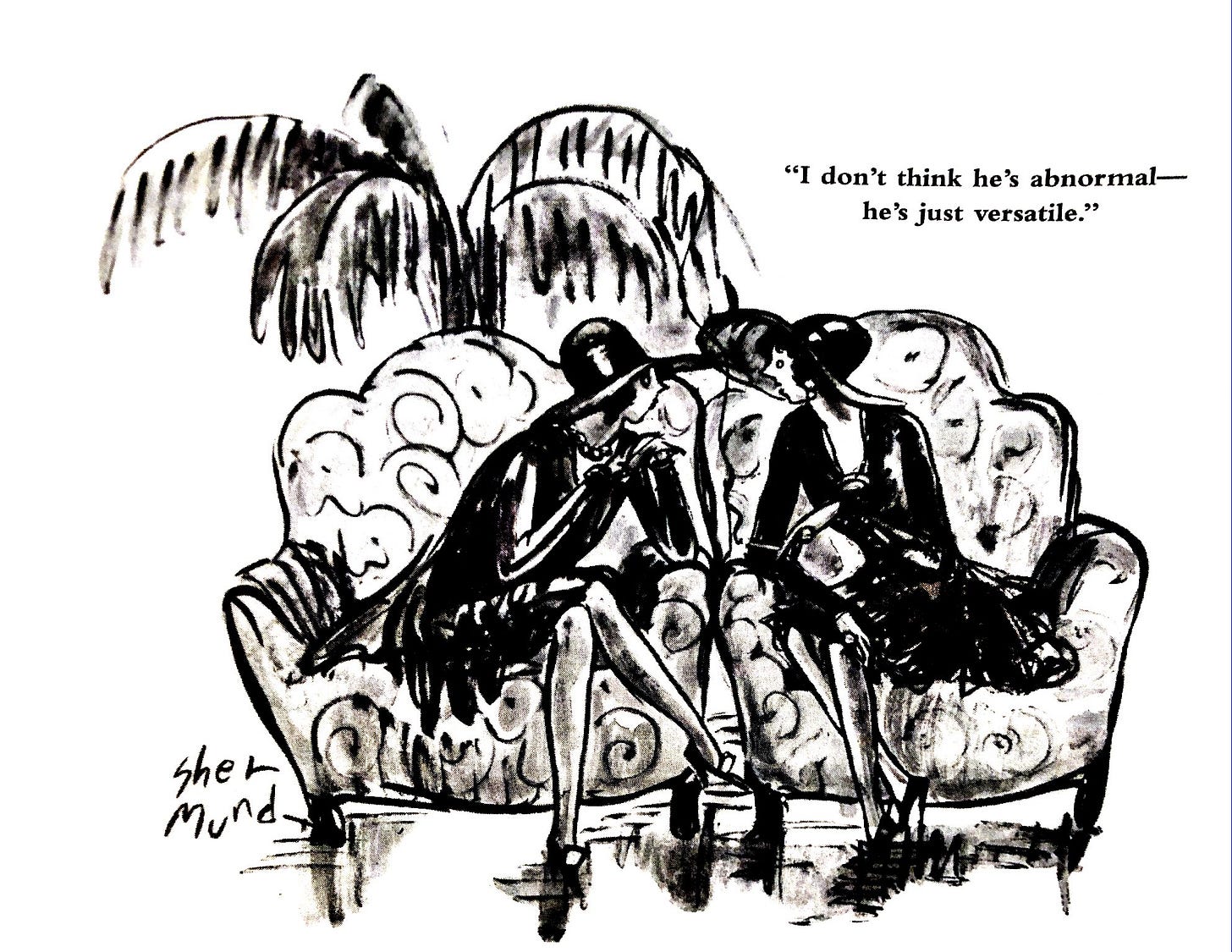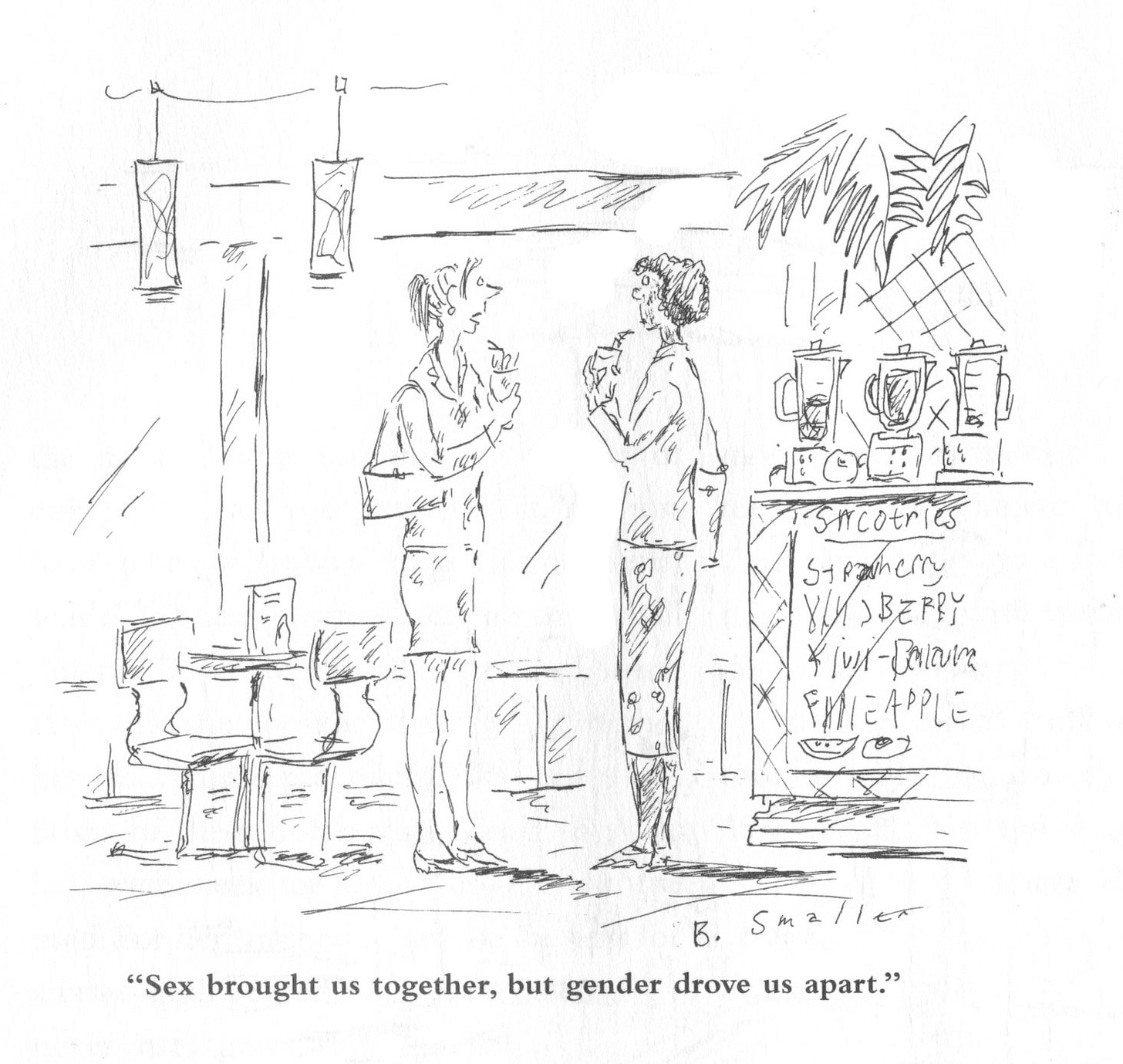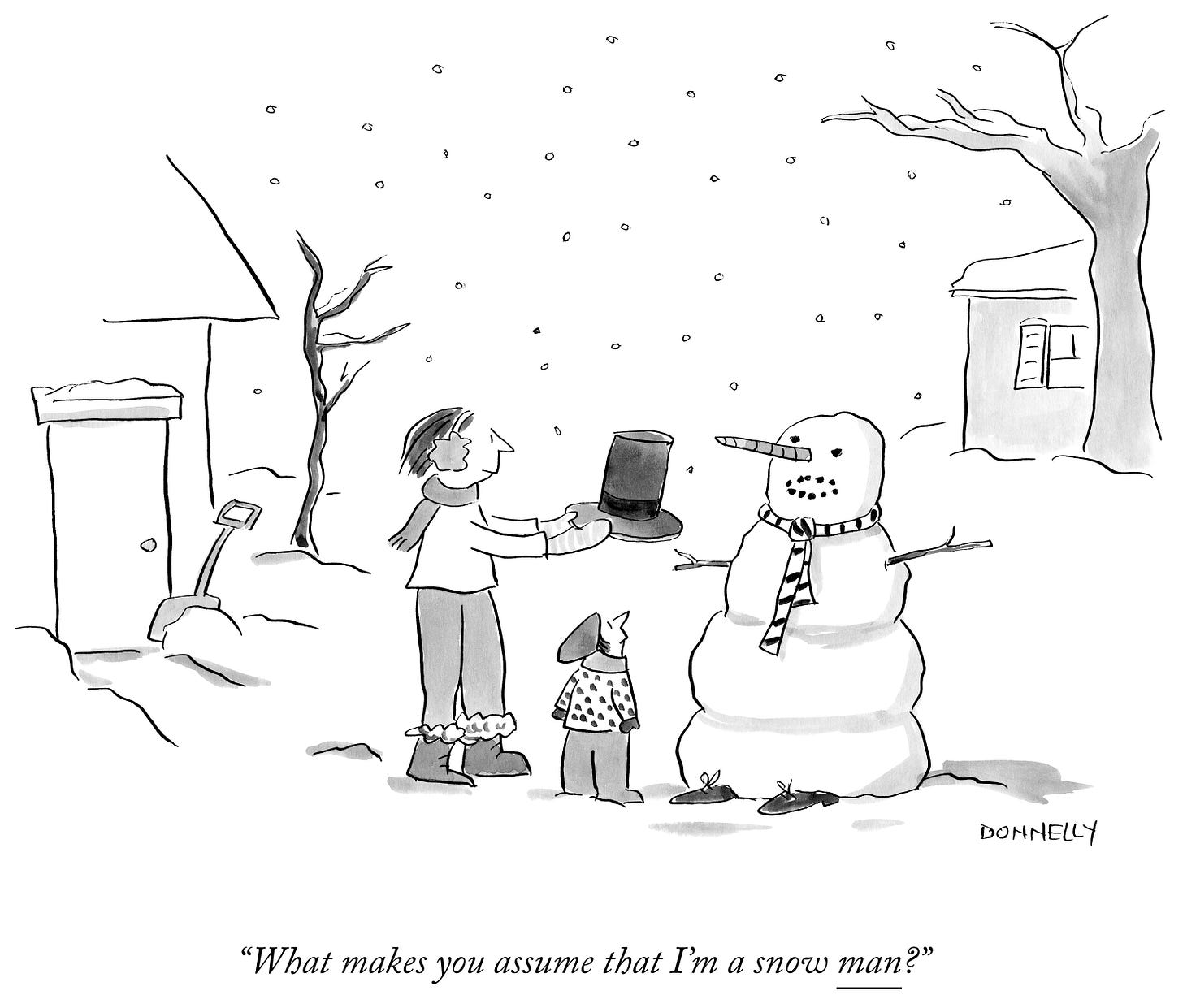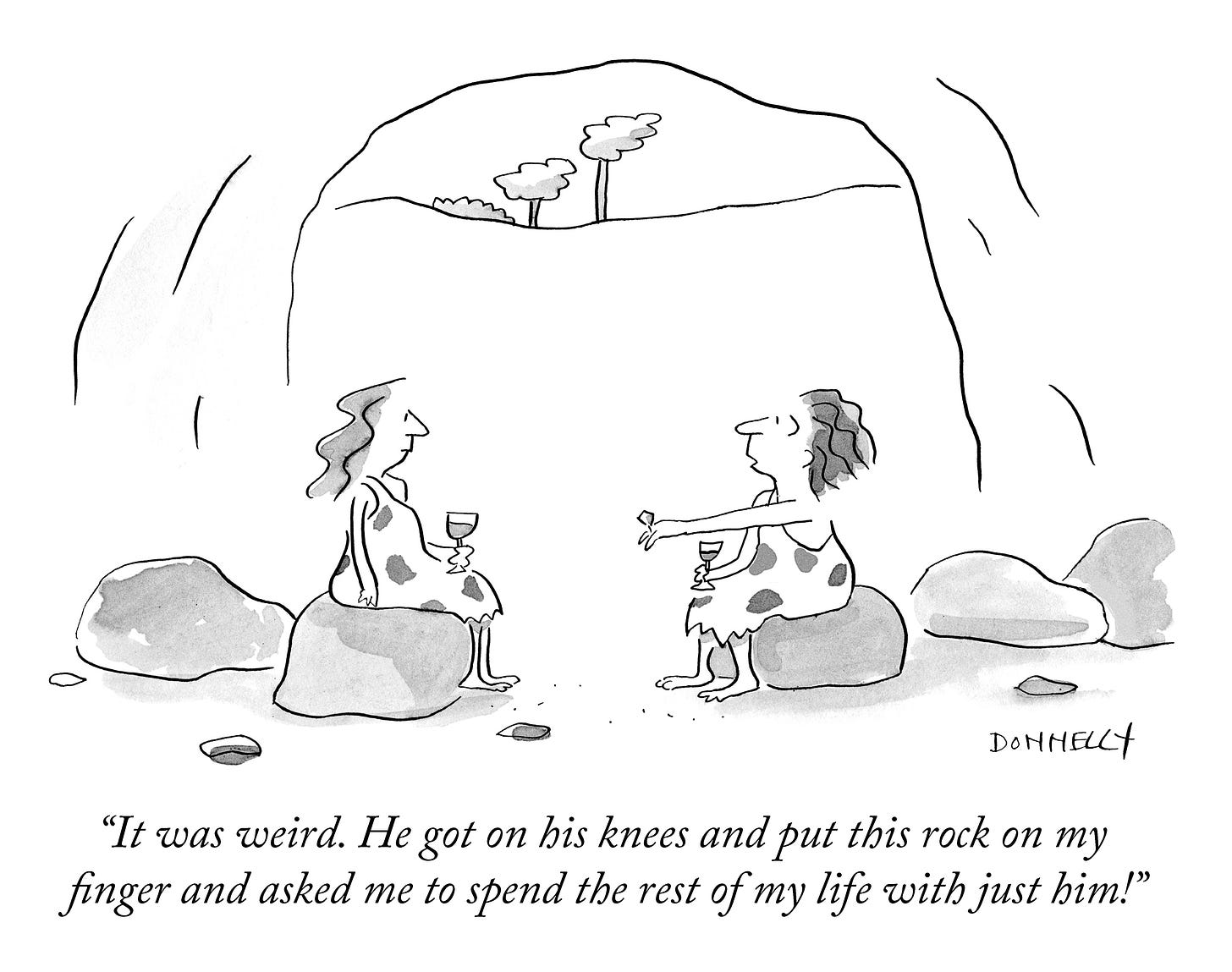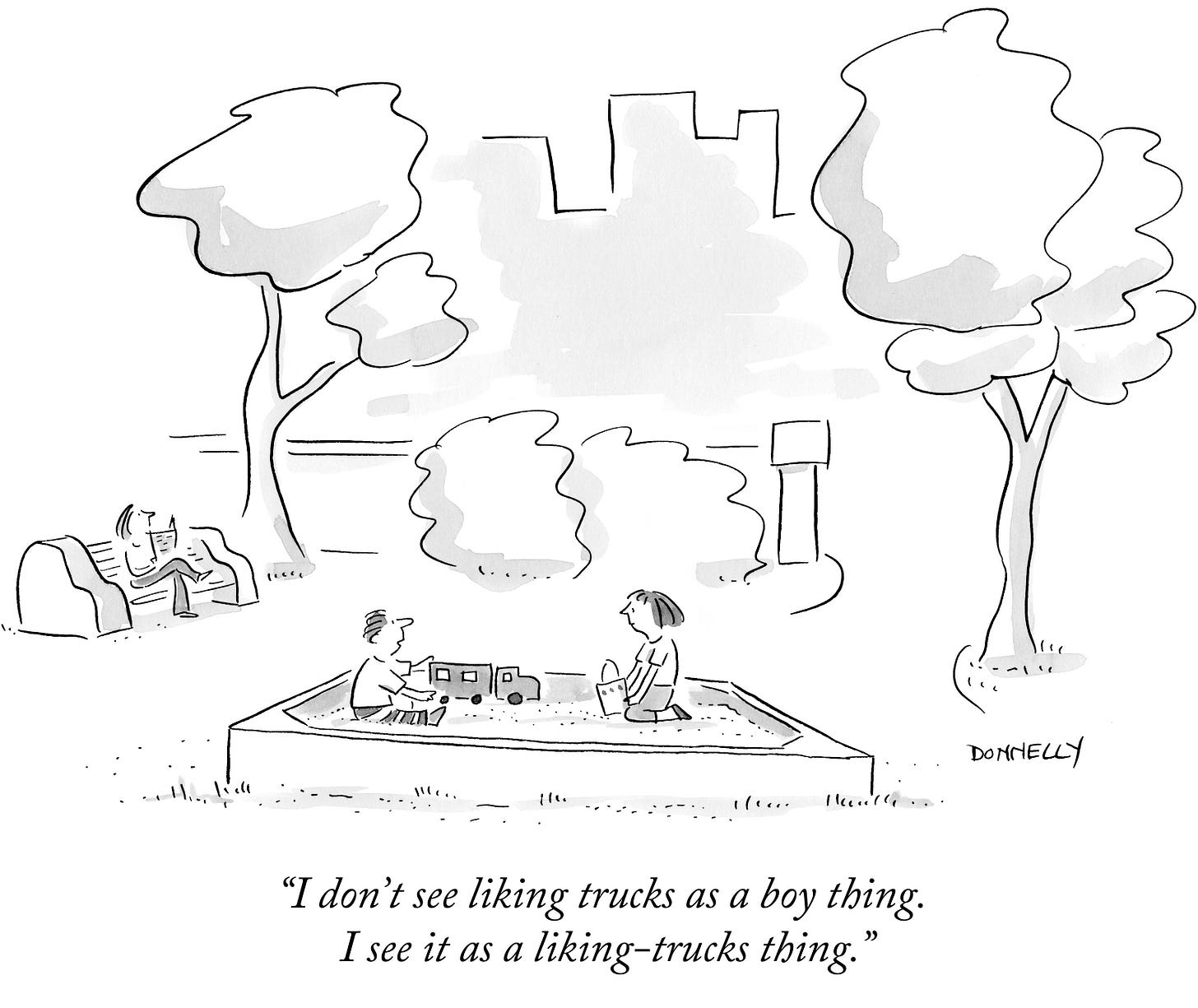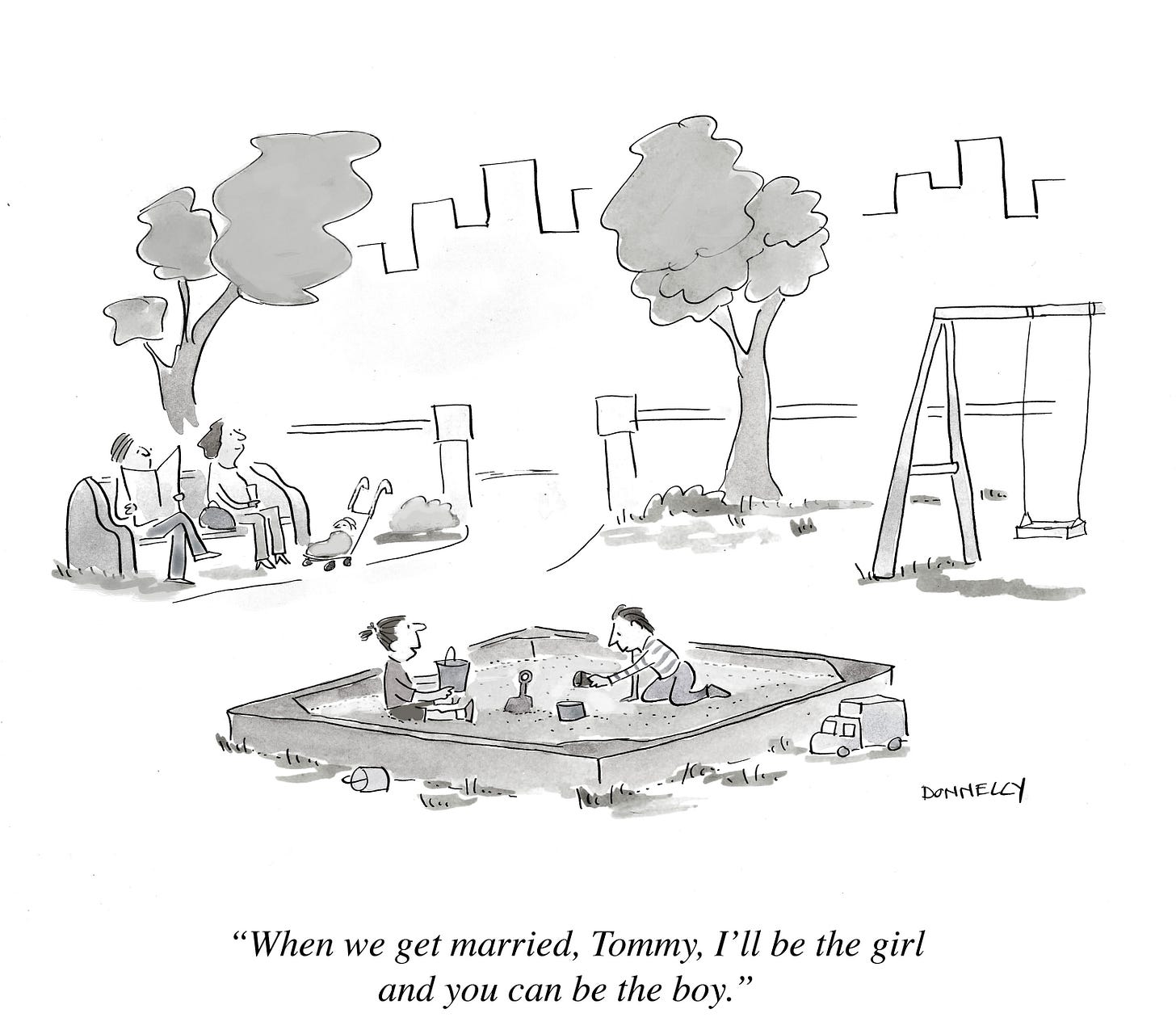Gender Meets Cartoon
The above sequential cartoon was rejected by The New Yorker, but I still like it. It’s kinda subtle, about relationships and computers. What I wanted to show you is something about my choices in the characters. At first, I drew this with a woman on the left and a man on the right. Then I thought better about it because, frankly, it seemed a stereotypical cartoon towards women —although making fun of women is totally okay, I just would rather do it more creatively. I didn’t want to do a cartoon about barking wives, if you know what I mean. Seems very 50’s. So I changed it to two men. It could have been two women. But it could not have been a man on the left and a woman an the right, then it would be about an overbearing, abusive male spouse. Complicated, I know. And who’s to say these characters aren’t non-binary or transgender and what would that mean? I suppose it would be up to me to make that decision, and if this little story continued, I could explore their gender identity. But I’m not going to continue! I have never written anything longer than a short graphic narratives, essays or screenplays. Making my made-up people do things in words, not pictures, is challenging and fun. I do think in pictures, so anything written has been cartooned in my mind.
My new book, Very Funny Ladies, explores gender. The New Yorker publishes the work of queer, non-binary and transgender cartoonists, of course, and its great that their perspectives are finally seen. Although it’s highly likely that there were all gender persuasions among cartoonists ever since The New Yorker began in 1925, we just didn’t talk about it. Below is a cartoon by my favorite cartoonist from the past, Barbara Shermund. I would suggest this cartoon, from around 1926, is about gender fluidity.
Shermund drew a number of cartoons about women and relations with men, in a non-conformist sort of way. That’s not to say The New Yorker didn’t run many cartoons about stereotypical relationships, and abuse: they did. Particuarly in the 1950’s and 60’s, when the cartoons—and humor in general— trended towards sexist.
I love this one by contemporary cartoonist Barbara Smaller, it has a funny twist.
Below are a couple of my New Yorker cartoons in recent years that deal with the subtle nuance of gender in our lives, our preconceptions and ways of performing gender.
This is by no means an exhaustive study on gender and cartoons—which I am sure you know. That would make a good article, I’ll work on that!






